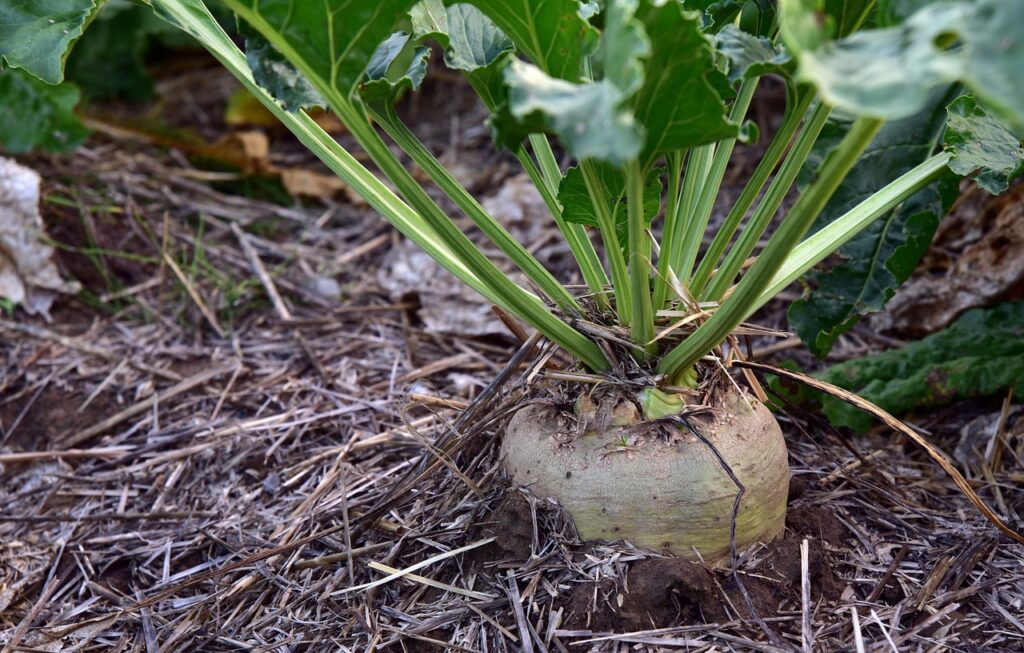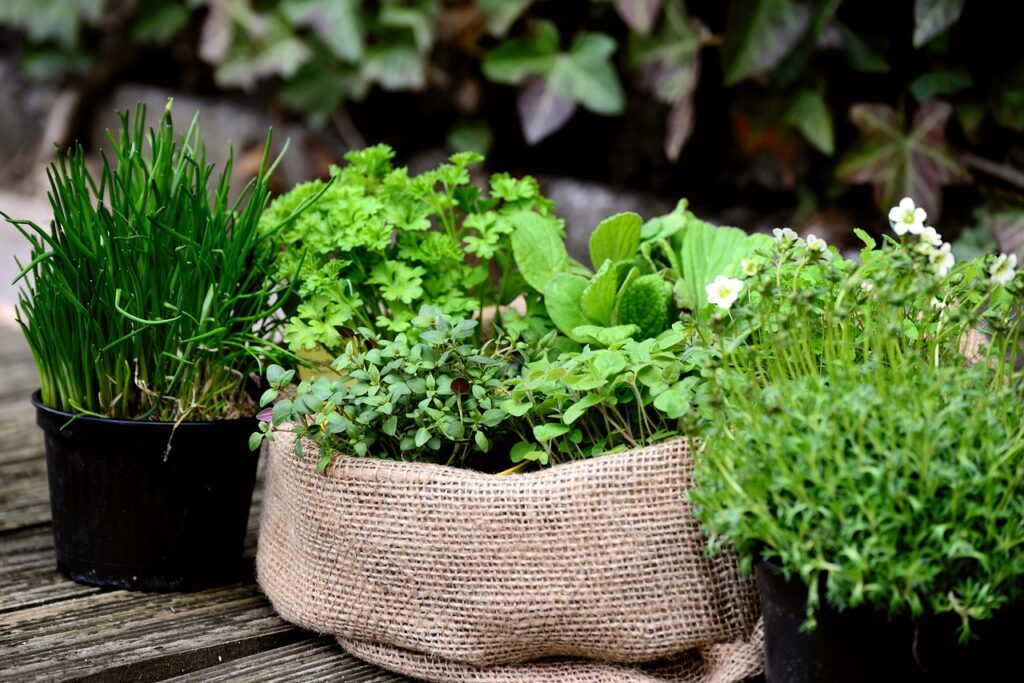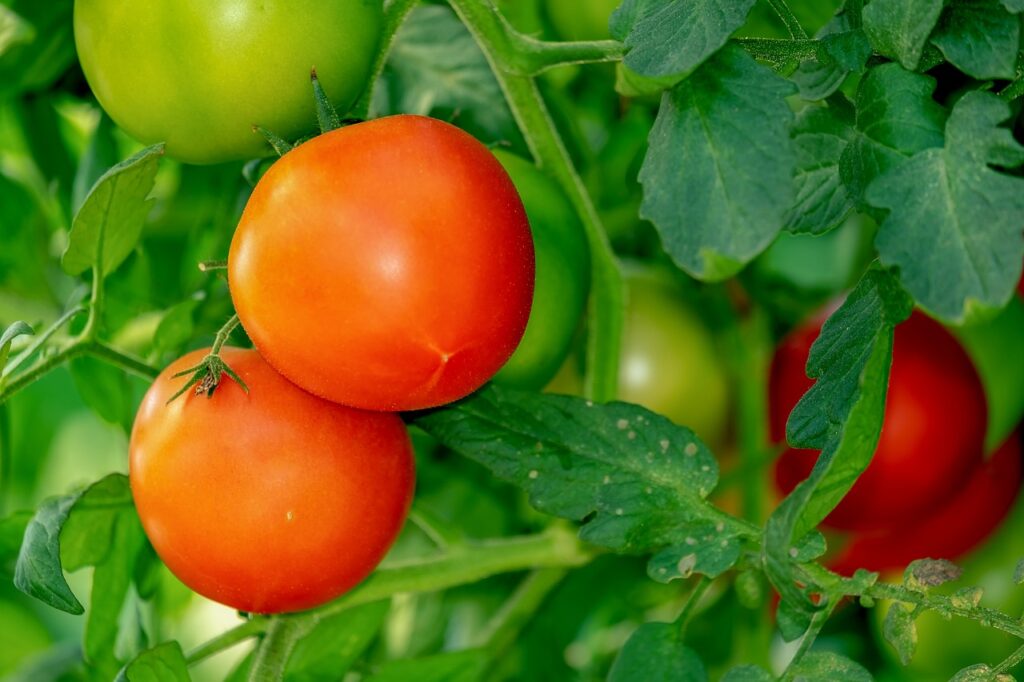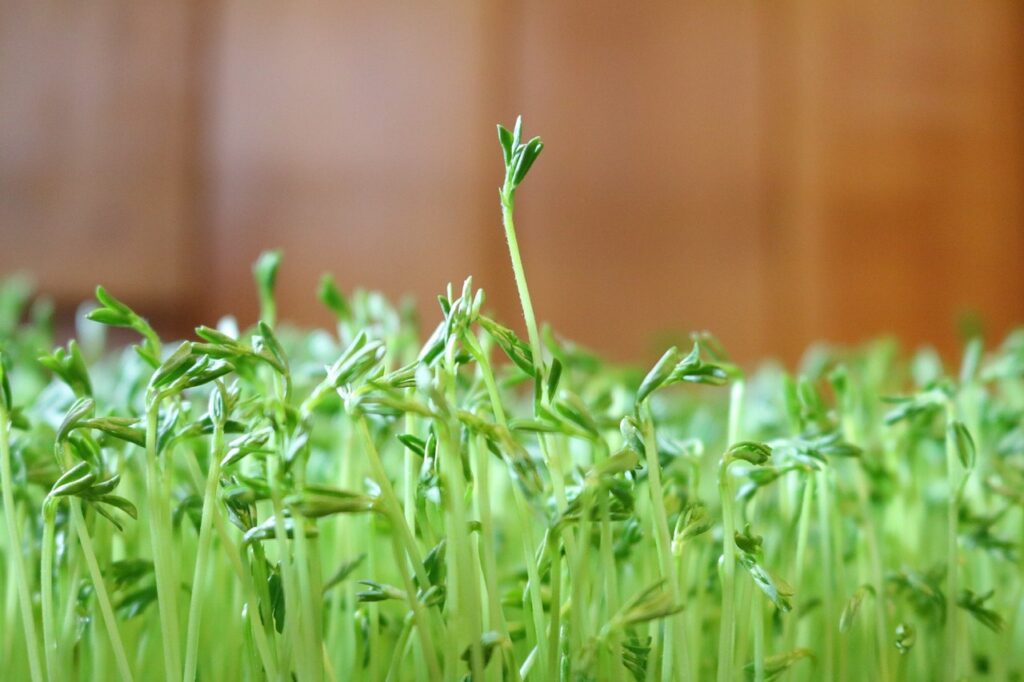If you’re looking to complement and improve the quality and yield of your root vegetables, companion planting with turnips is an effective way to do so. By planting certain companion plants around your turnips, you can create an environment that assists healthy growth and repels pests. In this guide, we’ll show you how to use companion planting with turnips to attract beneficial insects, deter pests, and promote healthier growth. Companion planting can be used in any vegetable garden for best growth and organic pest control.
As an Amazon and ebay Affiliate we may earn a commission off any purchases made through our links. This won’t affect the price you pay.
Getting Started with Turnips
Turnips are a root vegetable that are relatively easy to grow and care for. There is no shortage of online recipes, using turnips. If you’re planning on growing turnips in your garden, preparing a turnip patch is an important first step. Here are some tips for preparing a turnip patch.

Choose the Right Location
The first step in preparing a turnip patch is to choose the right location. Turnips prefer well-drained, fertile soil that is rich in organic matter. They also prefer a location that receives full sun or partial shade. Avoid planting turnips in low-lying areas that are prone to flooding, as this can cause the roots to rot.
Prepare the Soil
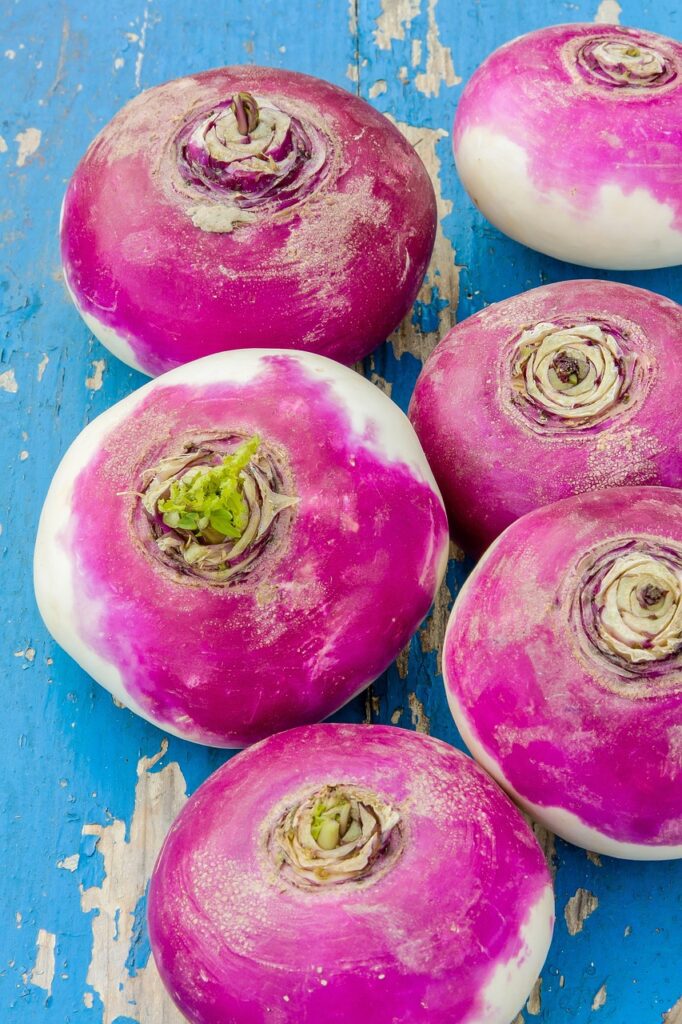
The first, important step to prepare the soil, don’t be tempted to skip this step. Start by removing any weeds, rocks, or debris from the area where you’ll be planting your turnips. Once clear from debirs and weeds, loosen the soil. Go down to a depth of 8-10 inches to give the roots room to grow. You can do this by using a pick(for harder, compacted ground), garden fork or tiller. Be careful not to overwork the soil, and avoid compaction, that is counterproductive.
Next, add some organic matter to the soil. This can be well-rotted compost, aged manure or leaf mold. Organic matter helps to improve soil structure, increase water retention, and provide nutrients to your turnips. Spread a layer of organic matter on top of the soil, and then use a garden fork or tiller to work it into the soil to a depth of 4-6 inches.
Test the Soil
Before planting your turnips, it’s a good idea to test the soil to determine the pH level. Turnips prefer a slightly acidic pH level of between 6.0 and 7.0. You can test the soil by using a soil test kit, which can be purchased at most garden centers or online.
If the pH level is not high enough, you can raise it by adding lime to the soil. If the pH level is too high, you can lower it by adding sulfur to the soil. Follow the instructions on the package for the appropriate amount to add to your soil based on the test results.

Add Fertilizer
Turnips are heavy feeders and require a lot of nutrients to grow and thrive. Before planting your turnips, it’s a good idea to add some fertilizer to the soil. Choose a fertilizer that is high in nitrogen, as this will help to promote root growth and foliage development.
You can use either a chemical fertilizer or an organic fertilizer, depending on your preference. Follow the instructions on the package for the appropriate amount to add to your soil, based on the size of your turnip patch.
Plant Your Turnips
Once you’ve prepared the soil, it’s time to plant your turnips. Start by making rows in the soil, spaced about 12-18 inches apart. Then, use a hoe or garden rake to create furrows in the soil, about ½ inch deep.
Next, place the turnip seeds into the furrows, spacing them about 2-3 inches apart. Cover the seeds with soil, and then water the area thoroughly. Keep the soil moist until the turnip plants emerge. Once the plants have emerged, you can reduce watering to once a week, unless the weather is particularly hot and dry.
Mulch the Soil
Finally, it’s a good idea to mulch the soil around your turnips. Mulch enables moisture retention in the soil, suppress weeds, and regulate soil temperature. You can use a variety of mulches, including straw, grass clippings, or shredded leaves.
Spread a layer of mulch around your turnips, being careful not to cover the plants. Aim for a layer of mulch, with a rough thickness of is 2-3 inches deep. Mulch will help to keep the soil moist and cool during the hot summer months, which can help your turnips to grow and thrive.

Attracting Beneficial Insects
By planting certain companion plants around your turnips, you can create an environment that is attractive to beneficial insects such as bees, butterflies, and ladybugs. These insects can help to pollinate your crops, control pests, and promote healthy growth. Here are some companion plants to consider when trying to attract beneficial insects to your turnips.
Clover
Clover is an excellent companion plant for turnips. It is a legume, which means it fixes nitrogen in the soil, making it available for other plants. Additionally, clover is a great cover crop that can help to suppress weeds and protect the soil from erosion. Clover is, in particular, popular with bees, which can help to improve pollination and promote healthy growth.
Lavender
Lavender is another great companion plant for turnips, and it too, can attract beneficial insects. Its flowers emit a sweet fragrance that is attractive to bees, butterflies, and other pollinators. Additionally, lavender contains natural insecticides that can help to deter pests such as aphids and whiteflies. Planting lavender near your turnips can help to create a more diverse and beneficial environment in your garden.
Sunflowers
Sunflowers attract a variety of beneficial insects and look great. Many of the listed plants here are great for attracting insects. Their large, brightly colored flowers are attractive to a variety of pollinators, including bees, butterflies, and hummingbirds. Additionally, sunflowers can provide shade for your turnips, helping to protect them from the hot sun.
Borage
Borage has a long flowering time, the beneficial insects won’t complain! Its blue flowers are attractive to bees and other pollinators, and its leaves contain natural insecticides that can help to deter pests. Additionally, borage is also able to improve soil health by fixing nitrogen in the soil. Planting borage near your turnips can help to create a more diverse and beneficial environment in your garden.
Mint
Mint is an old favorite. It is a great companion plant for turnips when it comes to attracting beneficial insects. Its flowers are attractive to bees, butterflies, and other pollinators, and its leaves contain natural insecticides that can help to deter pests. Additionally, mint is easy to grow and can be used in a variety of recipes. Planting mint near your turnips can help to create a more diverse and beneficial environment in your garden.
Deterring Pests
Companion planting with turnips can be an effective way to deter pests that may otherwise damage your crops. By planting certain companion plants around your turnips, you can create an environment that is less attractive to pests and that makes it harder for them to thrive. Here are some companion plants to consider when trying to deter pests from your turnips.
Marigolds
Marigolds are one of the best companion plants for turnips when it comes to deterring pests. They emit a strong odor that repels several types of pests, including aphids and whiteflies. Additionally, marigolds attract beneficial insects such as ladybugs and lacewings, which feed on pests that may damage your crops. Planting marigolds alongside your turnips can help to create a more diverse and pest-resistant environment in your garden.
Chives and Onions
Chives and onions emit a strong odor that is unappealing to pests such as thrips and onion maggots. Additionally, chives and onions contain sulfur compounds that can help to repel a variety of insect pests. Planting chives and onions near your turnips can help to keep pests at bay and protect your crops.
Nasturtiums
Nasturtiums also emit a strong odor that repels insects such as aphids, whiteflies, and squash bugs. Additionally, nasturtiums have a sticky sap that can help to trap and kill pests that may come into contact with them. Planting nasturtiums alongside your turnips can be an effective way to keep pest populations in check.
Borage
Borage attracts beneficial insects such as bees and parasitic wasps, which can help to control pest populations. Additionally, borage has a strong scent that repels several types of pests, including cabbage worms and tomato hornworms. Planting borage near your turnips can help to create a more pest-resistant environment in your garden.
Mint
Mint is a great companion plant for turnips when it comes to deterring pests. It emits a strong odor that repels several types of pests, including flea beetles and cabbage moths. Additionally, mint contains natural insecticides that can help to kill pests that may come into contact with it. Planting mint near your turnips can help to keep pest populations in check and protect your crops.
Improving Soil Health
Companion planting with turnips can be a really helpful way to improve the overall health of your garden soil, without the use of chemicals. By planting certain companion plants around your turnips, you can create an environment that promotes healthy microbial activity in the soil, increases nutrient availability, and improves soil structure.
One of the best companion plants for turnips when it comes to improving soil health is the daikon radish. Daikon radishes have long, tubular roots that grow deep into the soil. As they grow, these roots help to break up compacted soil and improve soil structure. This can lead to better drainage and aeration, which can in turn contribute to healthier root growth for your turnips and other plants.
Legumes, such as beans and peas, are another great option when it comes to improving soil health. These plants are able to fix nitrogen in the soil, making this nutrient available for other plants. Turnips are a heavy feeder, and they require a lot of nitrogen to grow and thrive. When grown alongside legumes, turnips have access to a natural source of nitrogen, which can help to promote healthy growth.
We list clover again! It’s great when comes to improving soil health is clover. Clover is a legume, and like other legumes, it is able to fix nitrogen in the soil, like legumes. Additionally, clover is a great cover crop that can help to suppress weeds and protect the soil from erosion. When utilized as a companion plant for turnips, clover can help to improve soil health and make it easier to control weeds.
Companion Plants for Turnip Seeds and Turnip Greens
Companion planting isn’t just beneficial for growing healthier turnip roots – it can also improve the growth of turnip seeds and turnip greens. By planting turnips alongside certain companion plants, you can create a more diverse and mutually beneficial environment that promotes healthy growth all around. Let’s take a closer look at some companion plants that are great for turnip seeds and turnip greens.

Beans and Peas
Beans and peas are excellent companions for turnips in many ways. For one, they fix nitrogen in the soil, which can be used by other plants, including turnips. Planting beans and peas near turnips can provide the benefit of shade for the turnip greens, this can help prevent them from bolting too quickly.
Beans and peas are also legumes, we have discussed these above. It does mean they have the ability to pull nitrogen from the air into the soil. This helps to increase the overall nitrogen levels in the soil, which is a key nutrient for plant growth. When turnips are grown in soil that has been enriched with nitrogen by beans and peas, they are more likely to get the nutrients they need to grow strong and healthy.
Brassicas
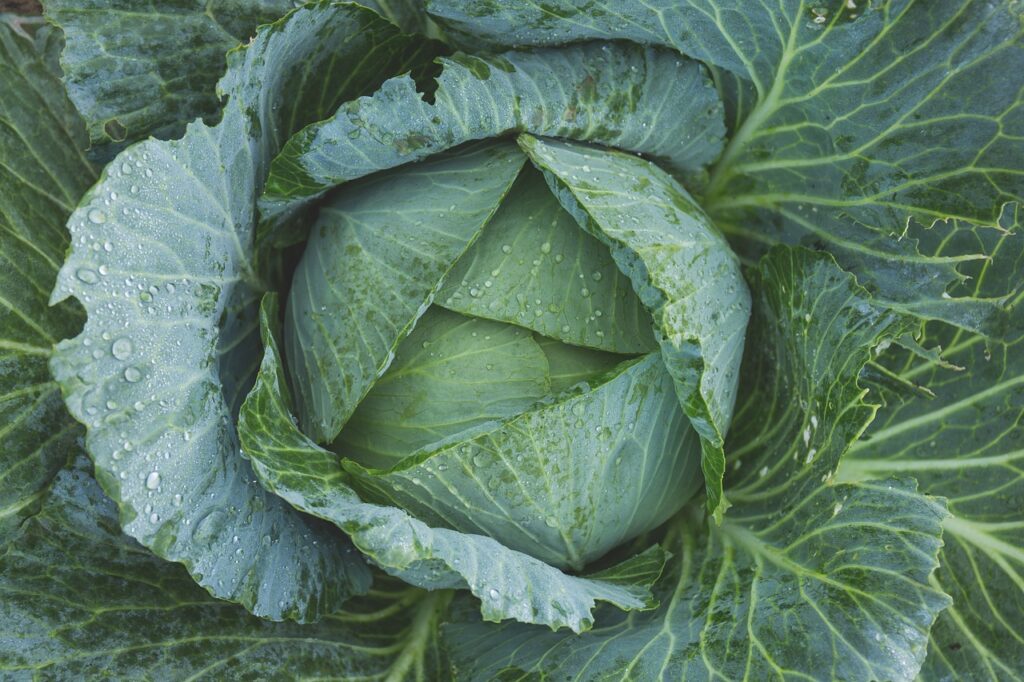
Brassicas, such as cabbage, broccoli, and kale, are great neighbors for turnips. These plants have similar nutrient requirements and can help to ensure that all plants in the vicinity receive the right amount of nutrients. Additionally, planting turnips with brassicas can help to ensure that pests are deterred from the area, as these plants are less attractive to pests than turnips alone.
One potential downside of planting brassicas and turnips together is that they can attract the same pests. However, by using strategic planting, it is possible to minimize this risk. For example, planting mature brassicas first and then adding young turnips can help to create a barrier against pests.
Lettuce
Lettuce is also beneficial as it provides shade for the turnip roots. Like beans and peas, lettuce can help to prevent turnip greens from bolting too quickly. When lettuce is planted close to turnips, it can help to cool the soil and create a more humid environment, which can benefit both the turnip greens and roots.
Lettuce is also a good companion plant for a turnip patch because it does not have the same nutrient requirements. This means it can grow in the same area without depleting the soil of the nutrients that turnip plants need.
Companion planting turnip seeds and turnip greens can be a great way to create a more diverse and mutually beneficial garden. By planting beans and peas, brassicas, and lettuce alongside turnips, you can provide shade, improve soil health, and promote healthier growth for all plants involved. Keep in mind that while these companion plants can be beneficial, there are also plants that should not be grown together. For example, turnips should not be planted with other root vegetables like carrots or beets, as they may compete for space and nutrients.
In Closing
Companion planting with turnips is a great way to improve the quality and yield of your root vegetables. By attracting beneficial insects, deterring pests, improving soil health, and promoting healthier turnip growth and greens, you will create a more diverse and productive environment in your garden. Try incorporating some of these companion plants into your gardening routine and see the results for yourself!
Learn about companion planting with Dill here
As an Amazon and ebay Affiliate we may earn a commission off any purchases made through our links. This won’t affect the price you pay.

